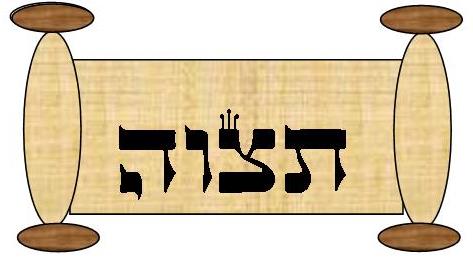Tetzaveh is the only parshah in the Torah since Moses’ birth in which Moses’ name does not appear (with the exception of the book of Deuteronomy, which consists wholly of a first-person narrative spoken by Moses). The Baal HaTurim explains that the reason for this is that, [when the people of Israel sinned with the Golden Calf,] Moses said to God: “If You do not [forgive them,] erase me from the book that You have written” (Exodus 32:31). This was realized in the parshah of Tetzaveh, since the censure of a righteous person, even if made conditional on an unfulfilled stipulation, always has some effect. The Lubavitcher Rebbe explains that While Moses’ name does not appear in the parshah of Tetzaveh, Moses himself is very much present. The entire parshah consists of God’s words to Moses! Indeed, the parshah’s first word is ve’attah, “and you”–the “you” being the person of Moses. Indeed, the word “you” connotes its subject’s very self, while a person’s name is a more superficial “handle” on his personality. This means that Moses is more present in our Parshah–that is, present in a deeper, more essential way–than any mention of his name could possibly express. This is fully in keeping with the Baal HaTurim’s explanation (cited above). Due to the fact that Moses was prepared to forgo mention of his name in the Torah for the sake of his people, he merited that his quintessential self–the level of self that cannot be captured by any name or designation–be eternalized by the Torah. It is this level of Moses’ self that is expressed by his “nameless” presence in the parshah of Tetzaveh.
The next 43 verses — about half of the parshah’s total — consist of God’s instructions to Moses regarding the making of the priestly garments for Aaron and his sons, who will perform the service in the Sanctuary. A total of eight types of garments were to be made. All Kohanim (priests) should wear the ketonet (tunic), michnasayim (breeches), mitznefet or migba’at (hat or turban); and avnet (sash). In addition, the Kohen Gadol (high priest) should wear a me’il (cloak), efod (apron), choshen (breastplate) and tzitz (crown). The Torah states: And [the priestly garments] shall be upon Aaron, and upon his sons, when they come in the Tent of Meeting, or when they come near to the Altar to minister in the holy place, that they bear not iniquity and die (28:43) The Midrash Rabbah relates that there was once a prince whose tutor would enter into the presence of the king on behalf of the prince; but the tutor was afraid of those who stood by the king lest one of them should attack him. What did the king do? He clothed him in his royal purple cloak, so that all who saw him might be afraid of him. Similarly, Aaron used to enter [into the Divine Presence]… and had it not been for the many merits which entered with him and aided him, he would have been unable to go in, on account of the angels that were there. For this reason did God provide him garments after the pattern of the divine garments…. as it says (Isaiah 59:17): “And [G-d] donned righteousness as a coat of mail, and a helmet of salvation upon His head, and He put on garments of vengeance for clothing, and was clad with zeal as a mantle.”
Parshat Tezaveh is usually read during the week preceding Purim (not this year as it is a leap year in the Hebrew calendar). Rabbi Jay Kelman notes that interestingly, the Megillah also is missing a very significant name, that of God Himself. Purim marks the period in which the direct role of God in history begins to recede. Prophecy has ended. The time has come for the Jewish people to be able to function despite hester panim – God’s face being hidden. Mordechai and Esther must use their political skills to save the Jewish people. Unlike Pesach no overt miracle will come to the rescue. During the formative years of the Jewish nation we needed the hand of God to guide us and prophets to teach us. Purim marks the transformation of the Jewish people. It is the holiday that celebrates the acceptance of the oral law which though its rules are divine, its application is left to the discretion of the Sages of every generation. Man will have to apply the Torah without guidance from God.
Moshe Rabbeinu was the faithful messenger of God bringing His word to the world. Yet the Torah is not dependant on Moses and is not even dependant on a “visible” God. But the Torah itself is eternal. Though the names of Moses and God may be missing from our Biblical reading this week, their presence is not. The hand of God and the Torah of Moses continues to be studied each and every day and though God is hidden those who look can see Him. May we be worthy to feel the presence of God in all that we do making all of our endeavors an implementation of the Divine plan for the betterment of the world.
Prepared by Devorah Abenhaim







